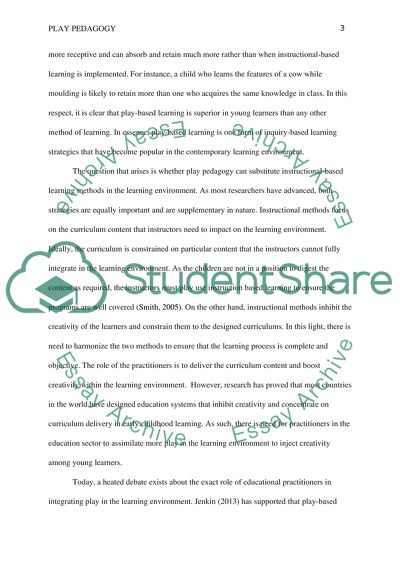Cite this document
(The Fact that Play Pedagogy Case Study Example | Topics and Well Written Essays - 1500 words, n.d.)
The Fact that Play Pedagogy Case Study Example | Topics and Well Written Essays - 1500 words. https://studentshare.org/education/1809012-discuss-the-impact-of-practitioners-on-play-pedagogy-and-the-tension-and-challenges-of-play-pedagogy
The Fact that Play Pedagogy Case Study Example | Topics and Well Written Essays - 1500 words. https://studentshare.org/education/1809012-discuss-the-impact-of-practitioners-on-play-pedagogy-and-the-tension-and-challenges-of-play-pedagogy
(The Fact That Play Pedagogy Case Study Example | Topics and Well Written Essays - 1500 Words)
The Fact That Play Pedagogy Case Study Example | Topics and Well Written Essays - 1500 Words. https://studentshare.org/education/1809012-discuss-the-impact-of-practitioners-on-play-pedagogy-and-the-tension-and-challenges-of-play-pedagogy.
The Fact That Play Pedagogy Case Study Example | Topics and Well Written Essays - 1500 Words. https://studentshare.org/education/1809012-discuss-the-impact-of-practitioners-on-play-pedagogy-and-the-tension-and-challenges-of-play-pedagogy.
“The Fact That Play Pedagogy Case Study Example | Topics and Well Written Essays - 1500 Words”. https://studentshare.org/education/1809012-discuss-the-impact-of-practitioners-on-play-pedagogy-and-the-tension-and-challenges-of-play-pedagogy.


